It finally feels like we’re starting to settle in here. We have begun doing hours-long observations of science targets for observers, and that means we can actually take a breath, catch up on email, and bond with our friends at LCO.
While having our dinner we were graced by our friend the Burro who likes pets.
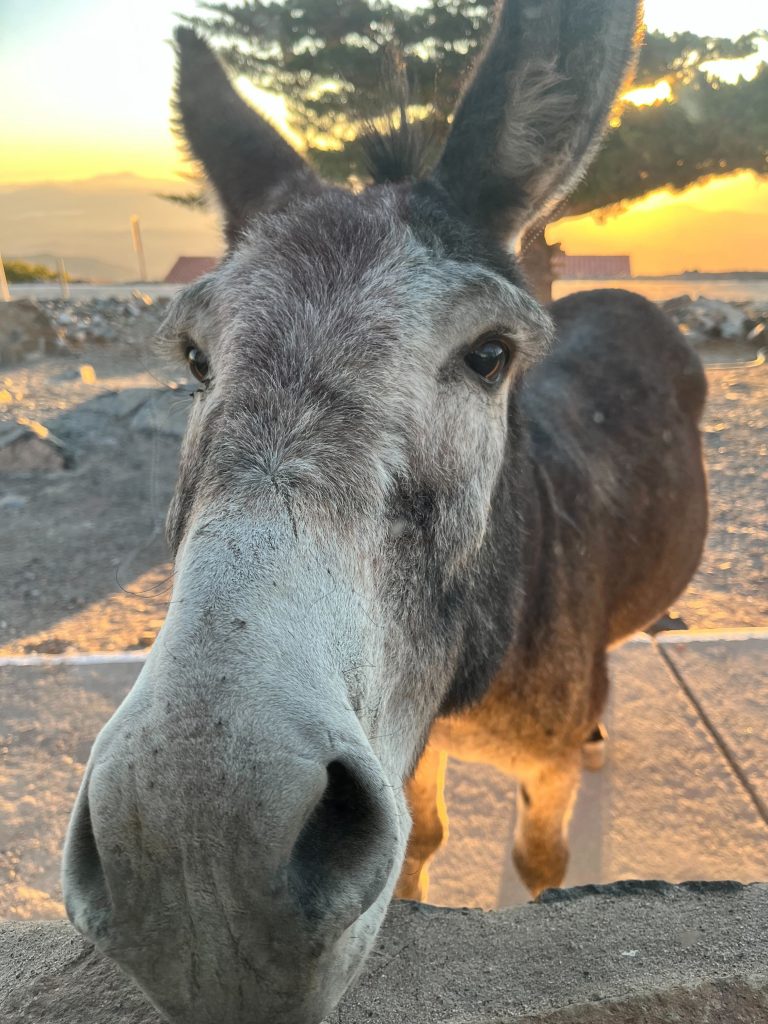
Sebastiaan had to negotiate passage to dinner.
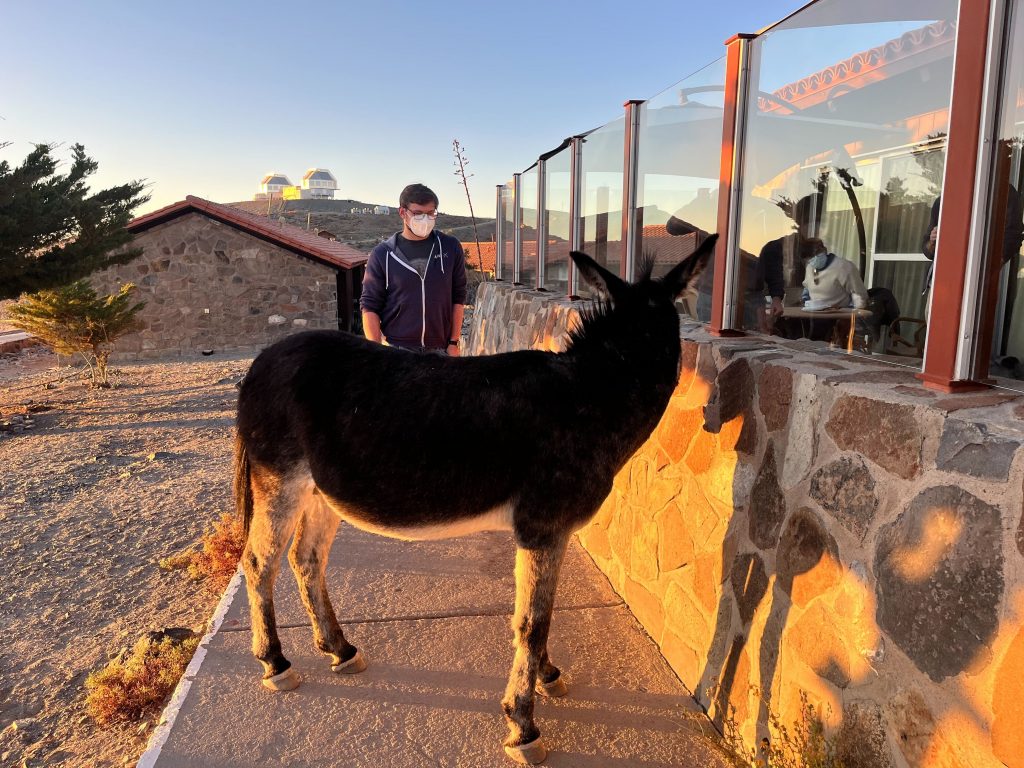
And Logan got her first nose scritches in.
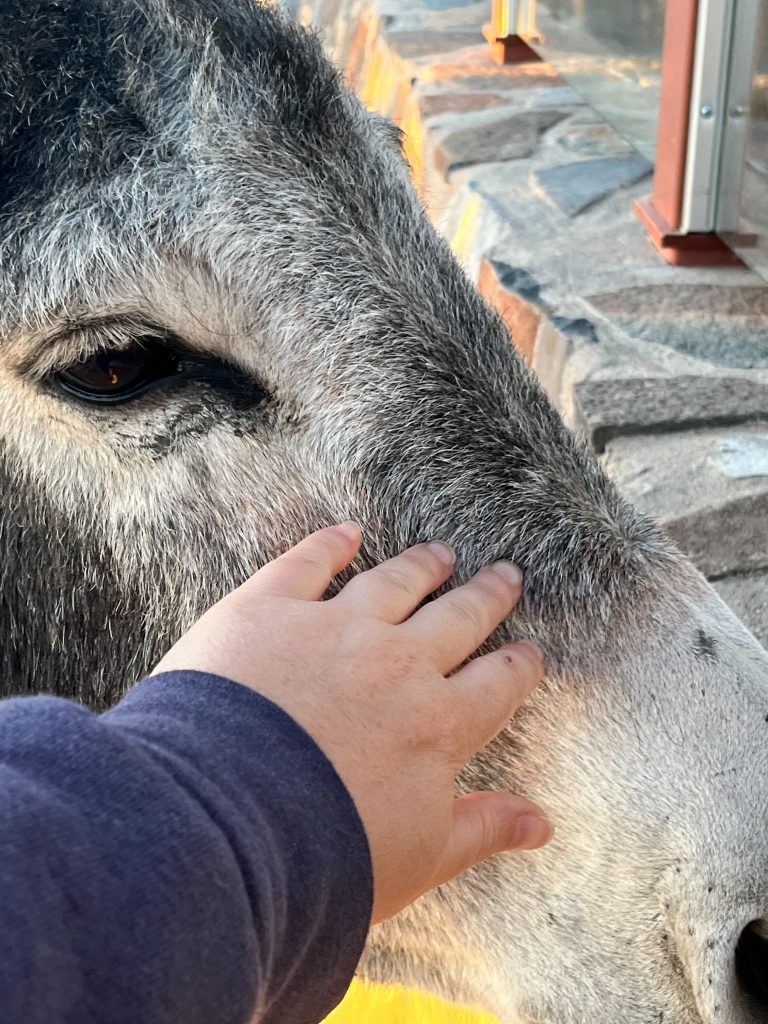
Sebastiaan then had to pay the toll to get by.
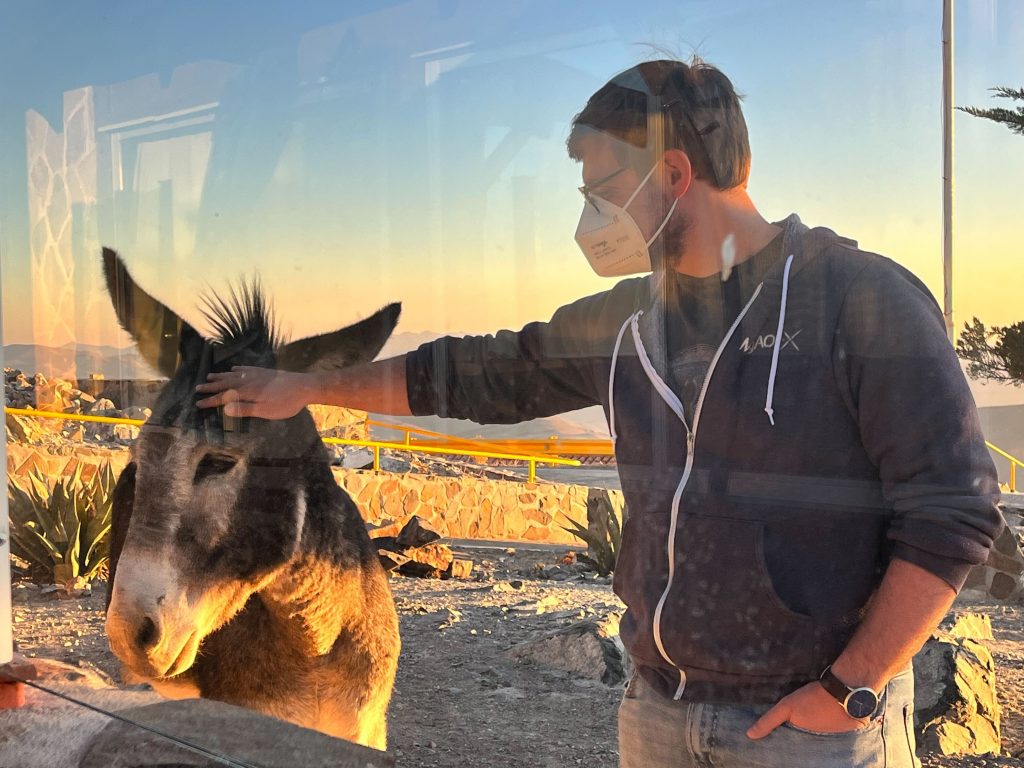
And Avalon made friends too.
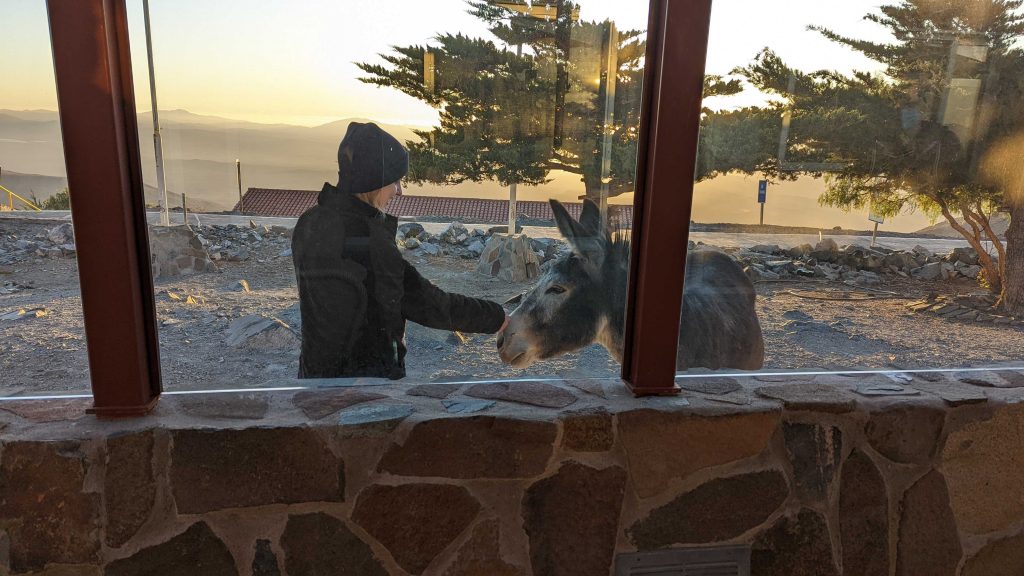
Our telescope operator Hernán Nuñez ( a hero of MagAO runs past ) told us that he thinks these guys have basically been abandon up here for a couple of years. This one, at least, clearly trusts and even likes humans, so it doesn’t seem like they’ve been wild their whole lives. Our friend might be a little lonely.
After our fun dinner party with the Burro, I walked up to the telescope for the first time since we went on sky. On the way up I saw our friend Povilas — It’s great catching up with old friends after such a long absence.

The night started with some VIS-X work by Sebastiaan.
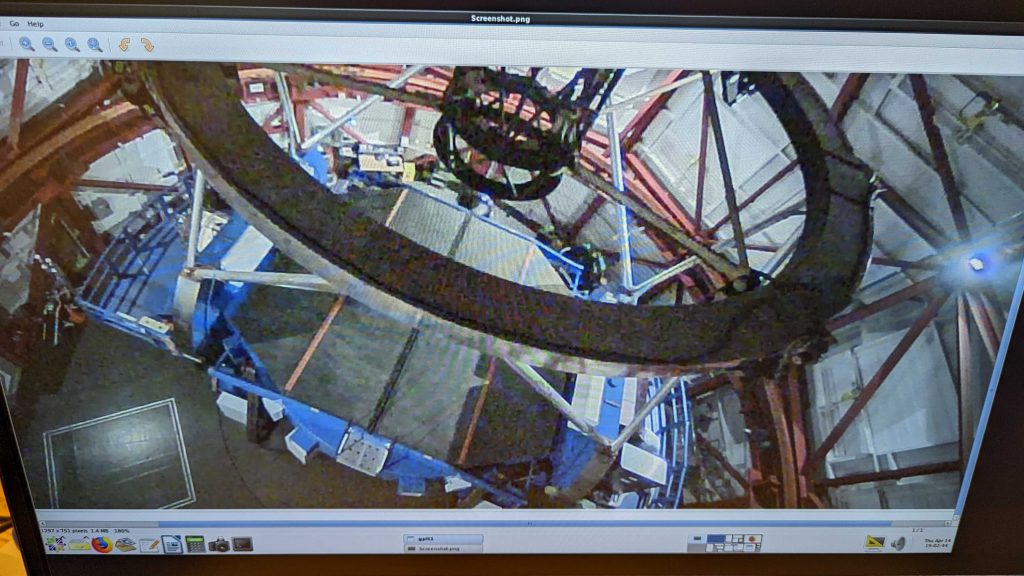
Where’s Sebastiaan? He’s in this photo working on MagAO-X.
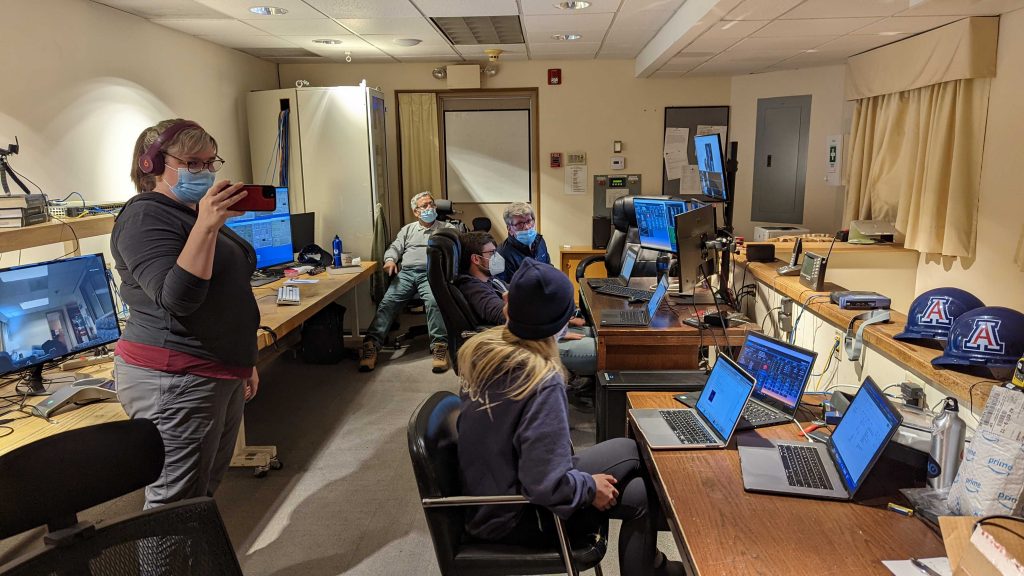
We started work on a nice bright star, part of Logan’s program. This was a great chance to put our high-speed low-drag coronagraphic mode to work. In the below image you can see the usual MagAO-X control panels. The lower right desktop shows the simultaneous images with a coronagraph disk occulting the star so we can look for companions. The 4 spots forming a cross are made by our deformable mirror as fiducials for alignment and photometry. The right-most image is our “low order wavefront sensor” camera, which is imaging light reflected from the coronagraph mask (the thing making the dark spot in the center of the other two images). We use that light to keep the spot centered at high speed (in this case 600 Hz). Fully understanding and optimizing this mode of observing is the key to my main science goal for MagAO-X, so it’s really exciting to see us getting started on it with a real star.
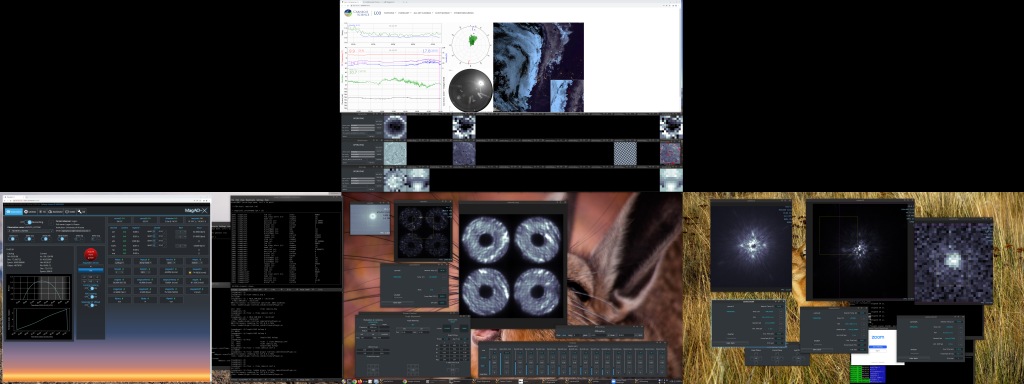
Here’s a close up view. Here the “satellite speckles” have green lines drawn between them, and the coronagraph is centered on the cross.
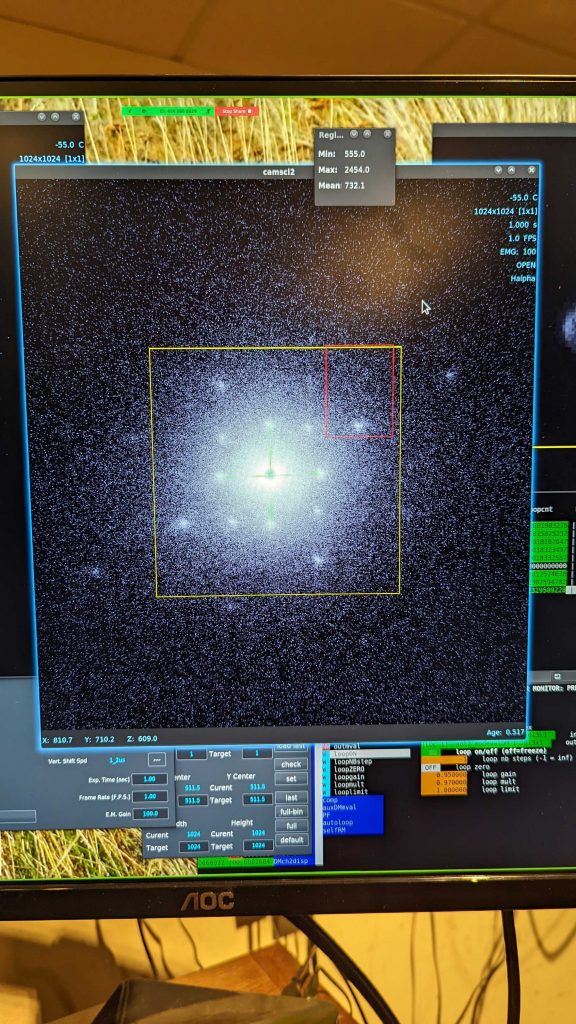
While we worked inside on our tiny little field of view, the great big outside sky was putting on quite a show:
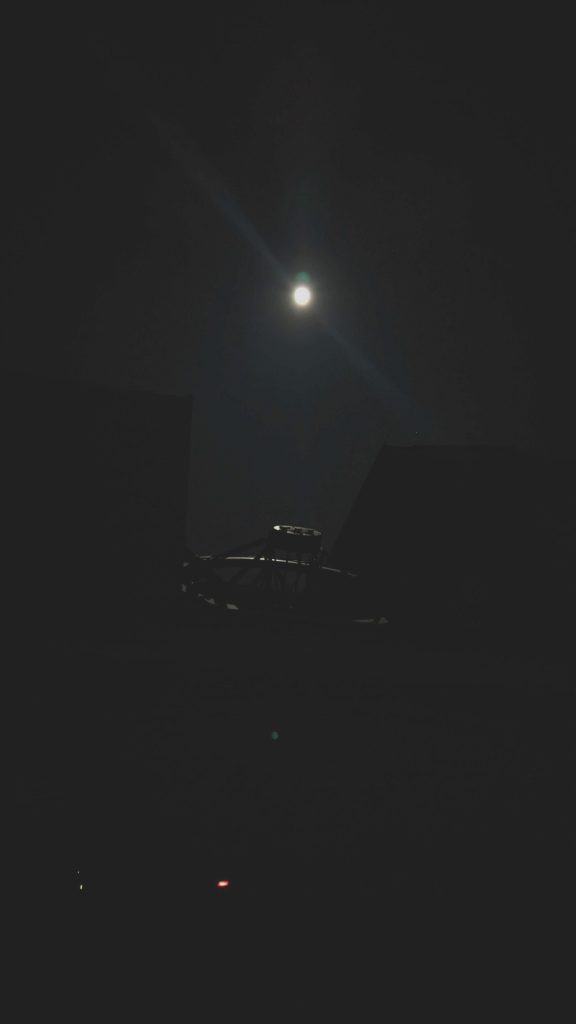
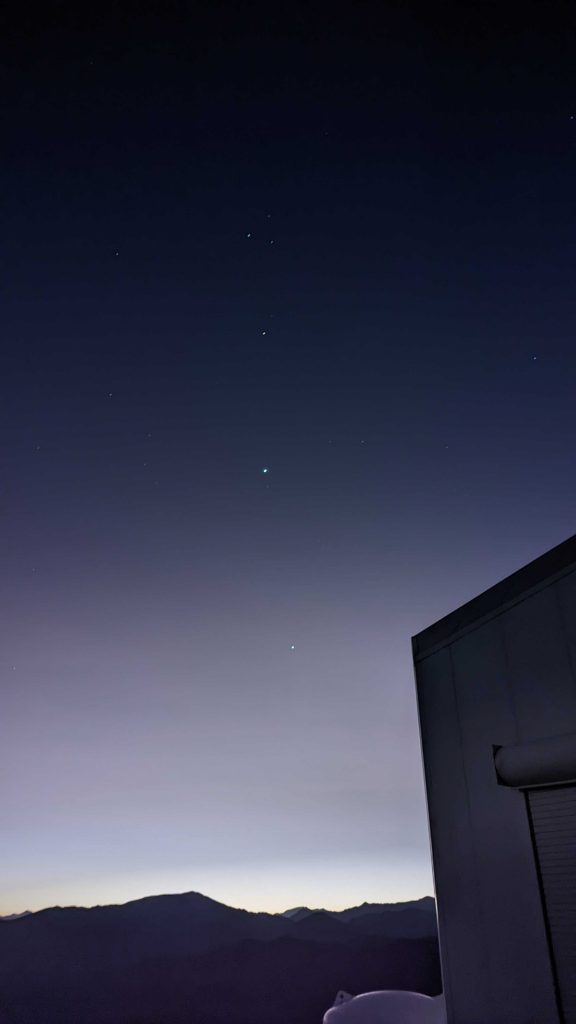
In the desert. A horse with no name. I can still remember my name. But the day of the week is already gone.